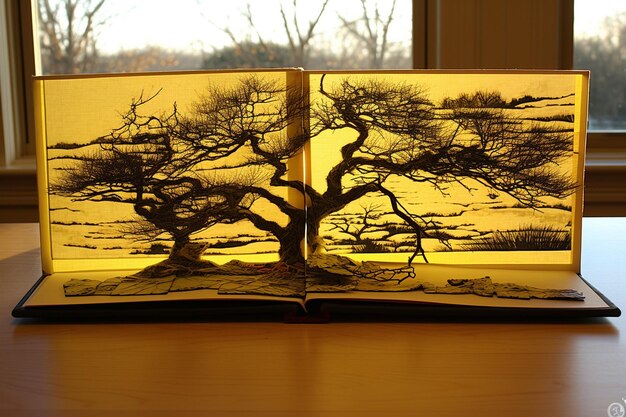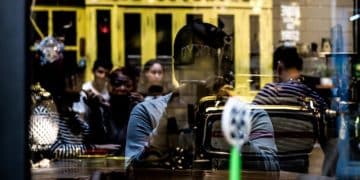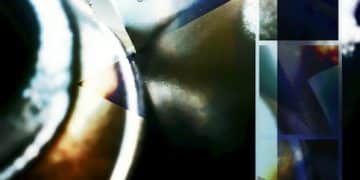From Page to Screen: Analyzing Book Adaptation Movie Reviews in 2025

From Page to Screen: Analyzing Book Adaptation Movie Reviews in 2025 examines the evolving landscape of cinematic adaptations, focusing on how critical reception and audience engagement are shaped by fidelity to the source material and creative interpretations in the ever-changing world of film.
The allure of seeing beloved books come to life on the big screen has captivated audiences for decades. In 2025, the conversation around book adaptation movie reviews centers on a crucial intersection: fidelity to the original text versus the artistic license taken by filmmakers. This article delves into the dynamics of From Page to Screen: Analyzing Book Adaptation Movie Reviews in 2025, exploring the key factors that contribute to a film’s success or failure in the eyes of both critics and viewers.
The Evolution of Book Adaptations
Book adaptations have a rich history in cinema, evolving from straightforward interpretations to reimagined stories. Understanding this evolution is essential for analyzing modern movie reviews, as expectations and standards have changed significantly over time.
The early days of cinema often saw adaptations that adhered closely to the source material, driven by technological limitations and a desire to capture the essence of the book. However, as filmmaking techniques advanced, directors began to experiment with different approaches.
Early Adaptations: A Look Back
Early adaptions followed a more rigid structure, feeling the pressure to stick closely to the source material. This also stemmed from technological limitations at the time.
Modern Interpretations: Creative Freedom
Modern interpretations take far more creative freedom when adapting a book to the big screen. While remaining true to the heart of the book, they’re unafraid to take exciting risks.
- Exploring deviations from the original plot.
- Discussing the impact of visual storytelling.
- Highlighting notable examples of successful and unsuccessful adaptations.
- Analyzing the role of special effects and CGI.
Ultimately, the evolution of book adaptations reflects a growing appreciation for the unique qualities of both literature and film. Modern audiences expect more than just a faithful retelling; they seek a cinematic experience that enhances and complements the original story.

Key Factors in Book Adaptation Movie Reviews
Several critical elements influence how book adaptations are received by critics and audiences. These factors range from the faithfulness of the adaptation to the quality of the acting and direction.
Understanding these key factors provides a framework for analyzing movie reviews and predicting the success of future adaptations. It also highlights the complex relationship between literature and film, where creative interpretation and audience expectations often clash.
Faithfulness vs. Interpretation
Faithfulness and interpretation are two vital components when adapting a piece of literature to film. Striking a balance can be a tough thing to do.
Casting and Performances
Poor casting and/or acting can ruin a movie no matter how well produced it may be otherwise. Stellar acting can elevate a film to new heights.
- Evaluating the performances of the lead actors.
- Assessing the chemistry between characters.
- Discussing the impact of casting choices on audience perception.
- Comparing performances to character portrayals in the book.
The success of a book adaptation depends on a harmonious blend of faithfulness, creative interpretation, and skilled execution. Movie reviews in 2025 reflect this multifaceted approach, emphasizing the importance of understanding the source material while embracing the unique possibilities of the cinematic medium.
Audience Expectations in 2025
In 2025, audience expectations for book adaptations are higher than ever. Moviegoers are increasingly knowledgeable and discerning, demanding sophisticated storytelling and visually stunning experiences.
Meeting these expectations requires filmmakers to understand the nuances of the source material while also pushing the boundaries of cinematic innovation. Failing to do so can result in critical backlash and box-office disappointment.
The Impact of Social Media
Social media has played a big part in how consumers will view a film before it is even produced. This can have both positive and negative effects on its production.
Balancing Nostalgia and Innovation
Audiences also need to have a sense of nostalgia when watching a movie, as it brings back warm memories for them and allows them to connect to the source material on the big screen.
- Analyzing the role of nostalgia in audience reception.
- Exploring the use of fan theories and online discussions.
- Highlighting the importance of word-of-mouth marketing.
- Discussing the challenges of appealing to both longtime fans and new viewers.
By understanding and adapting to these evolving expectations, filmmakers can create book adaptations that resonate with audiences and leave a lasting impact. Movie reviews in 2025 will undoubtedly reflect this dynamic, rewarding those who successfully navigate the complex world of fan engagement and cinematic innovation.
The Role of Technology in Modern Adaptations
Technology plays a pivotal role in modern book adaptations, enabling filmmakers to create visually stunning and immersive experiences that were once impossible. From special effects to CGI, technology has transformed the way stories are told on the big screen.
However, the use of technology must be balanced with artistic vision and storytelling. Over-reliance on special effects can detract from the narrative and alienate audiences. The key is to use technology to enhance the story, not to overshadow it.

Advances in CGI and Visual Effects
As technology advances, so do CGI capabilities. This results in more realistic and more advanced films.
Immersive Storytelling with VR/AR
Virtual and augmented reality storytelling creates an experience beyond the big screen. It allows the viewer to fully immerse themselves in the film.
- Analyzing the impact of CGI on fantasy and science fiction adaptations.
- Exploring the use of virtual reality and augmented reality in storytelling.
- Highlighting the benefits and drawbacks of motion capture technology.
- Discussing the ethical considerations of digital character creation.
In 2025, technology will continue to drive innovation in book adaptations, offering filmmakers new tools and techniques for bringing stories to life. Movie reviews will likely focus on the seamless integration of technology and storytelling, rewarding films that use technology to enhance the narrative and create a truly immersive experience.
Analyzing Critical Reception Patterns
Critical reception patterns for book adaptations often reveal recurring themes and trends. By analyzing these patterns, we can gain insights into the factors that contribute to a film’s success or failure in the eyes of critics.
Understanding these patterns can help filmmakers anticipate potential challenges and develop strategies for overcoming them. It can also inform casting choices, script revisions, and marketing campaigns.
Common Criticisms of Adaptations
Certain criticism is very common among book adaptations. These include straying too far from the source material or not doing enough to appease the fans.
Factors Influencing Positive Reviews
In order to receive positive reviews, it is vital to remain respectful and loyal to the source material from the book.
- Examining the role of genre in critical reception.
- Analyzing the impact of director and screenwriter choices.
- Highlighting the influence of studio marketing campaigns.
- Discussing the importance of early reviews and word-of-mouth.
By understanding these reception patterns, filmmakers can increase their chances of creating a book adaptation that resonates with both critics and audiences. Movie reviews in 2025 will likely continue to reflect these trends, rewarding films that demonstrate a deep understanding of the source material and a commitment to cinematic excellence.
Case Studies: Successful and Unsuccessful Adaptations
Examining specific case studies of both successful and unsuccessful book adaptations can provide valuable lessons for filmmakers. By analyzing the strengths and weaknesses of these films, we can identify best practices and avoid common pitfalls.
These case studies serve as a reminder that book adaptations are a complex and multifaceted endeavor, requiring a delicate balance of artistic vision, technical skill, and audience understanding. The successes and failures of past adaptations can inform future projects and help filmmakers create films that resonate with audiences on a deeper level.
The “Harry Potter” Series
The Harry Potter books are a wildly successful series turned movie adaptation. The movies kept most of the original plot while adding their own artistic and creative freedoms.
The “Percy Jackson” Series
The biggest complaint surrounding the Percy Jackson series is that the movies strayed too far from the source material, which made the fans angry, as the book series was and still is wildly popular.
- Analyzing the creative choices made by directors and screenwriters.
- Evaluating the performances of the lead actors.
- Discussing the impact of marketing and promotional campaigns.
- Highlighting the role of audience reception and box-office success.
In 2025, the legacy of these case studies will continue to influence the world of book adaptations. Movie reviews will undoubtedly reference these examples as benchmarks for success and cautionary tales of failure, guiding filmmakers towards a deeper understanding of the art and craft of adapting literature for the screen.
| Key Point | Brief Description |
|---|---|
| 🎬 Adaptation Fidelity | Balancing loyalty to the book with cinematic interpretation. |
| 🎭 Casting Choices | The crucial role of actors in bringing beloved characters to life. |
| 🌐 Audience Expectations | Understanding what viewers want in a book-to-movie adaptation. |
| ✨ Technology’s Impact | How CGI and VR shape modern book adaptations. |
Frequently Asked Questions
▼
One of the most frequent complaints is when films stray too far from the original source material. Fans of beloved book series can get upset when movies take too many liberties.
▼
Social media plays a significant role in shaping audience opinions both before and after a movie’s release. Fan theories and discussions can highly influence expectations and critical analysis.
▼
The right casting choices can either make or break a movie. Stellar performances can lead to an elevation of the film, while miscasting can distract from the source material.
▼
CGI and visual effects offer filmmakers unprecedented tools for bringing fantastical elements to life. It allows them to create worlds and scenarios that were impossible in the past.
▼
Immersive storytelling involves the use of virtual or augmented reality to fully place the audience in the story. It allows them to experience the narrative in a deeper and more engaging way.
Conclusion
Analyzing book adaptation movie reviews in 2025 reveals a complex interaction between audience expectations, faithfulness to the source material, the impact of technology, and creative interpretation. Successful adaptations masterfully navigate these elements, delivering cinematic experiences that resonate with both critics and viewers, continuing the rich legacy of bringing beloved books to life on screen.





